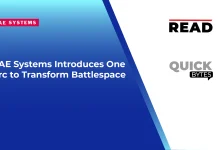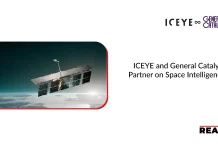Ameren Missouri, battery developer and manufacturer GS Yuasa, and Siemens have recently marked a milestone in the clean energy transition by successfully implementing a cutting-edge, first-of-its-kind Managed EV Charging and Microgrid platform. Powered in part by stationary advanced lead-acid batteries, and soon-to-be integrated solar panels, this innovative system is now operational at Ameren’s St. Louis campus.
“This groundbreaking project has far-reaching implications for economic development and industry advancement,” said Alex Rojas, director of innovation implementation and strategy at Ameren Services. “By demonstrating the feasibility and benefits of electrifying fleet vehicles, Ameren aims to inspire commercial and institutional fleet vehicle owners and operators to embrace cleaner, more sustainable transportation solutions. The system’s ability to address relevant business and operational needs, such as fire safety, energy resiliency, demand charge management and demand response offers a compelling value proposition for these organizations.”
The installation is a result of collaboration between companies to develop a more economical and sustainable option for EV fast-charging. The Consortium for Battery Innovation (CBI) guided and supported the industry towards this type of innovation. Ameren Missouri will use the station to power its fleet of electric service vehicles.
Also Read: Nanoramic Secures $44M Funding to Advance Neocarbonix Commercialization
The new charging station employs stationary advanced lead batteries. The EV chargers pull energy from the electric grid, the stationary lead battery and solar panels as needed. The information technology system optimizes the use of energy by the EV chargers to maximize clean energy sources and minimize cost.
“This is potentially game-changing for EV charging in the United States,” said CBI’s Director of Technology Dr. Matt Raiford. “The system is easy to replicate, will use renewable energy and adopts the latest battery and battery management technologies to provide efficient EV charging. This is a sustainable and intelligent charging system. It can be housed virtually anywhere, which opens up the ability to extend efficient and cost-effective charging facilities in both rural and city locations.”
The sustainable process uses advanced lead batteries in an energy storage system forming a microgrid which backs-up the EV chargers – reducing cost and improving reliability as two of its capabilities.
The charging system is a first in the United States and if it continues to prove its safety and performance, could be rolled out across the country improving access to EV charging facilities and reducing cost.
Demand for EV charging infrastructure and smart grid technology is substantial, with forecasts that the number of charging points could grow nearly five-fold in the near future. The deployment of this innovative Ameren facility using advanced lead batteries from GS Yuasa could prove to be a model for both improving access to charging facilities as well as reducing cost for operators.
“The battery energy storage system (BESS) we have designed utilizes our advanced nano- carbon lead batteries along with battery management and power conversion systems, housed in containers on site,” said Bill Cunningham, GS Yuasa’s Vice President of Sales and Marketing. “This is an energy storage process that can be adopted virtually anywhere because our batteries are reliable, high-performing and cost-efficient over their lifetime.”
The one-megawatt-hour microgrid includes GS Yuasa’s advanced lead batteries capable of more than 5000 cycles, making the system durable, long-lasting and cost efficient. Lead batteries are more than 99% recycled at the end of their use and their components used to manufacture new batteries. The Doe Run Company, an Ameren customer and fellow Missouri business, is a global supplier to the lead market and recycles more than 8 million lead batteries each year. Doe Run was instrumental in bringing Ameren together in collaboration with CBI and GS Yuasa to develop this technology.
SOURCE: PRNewswire




